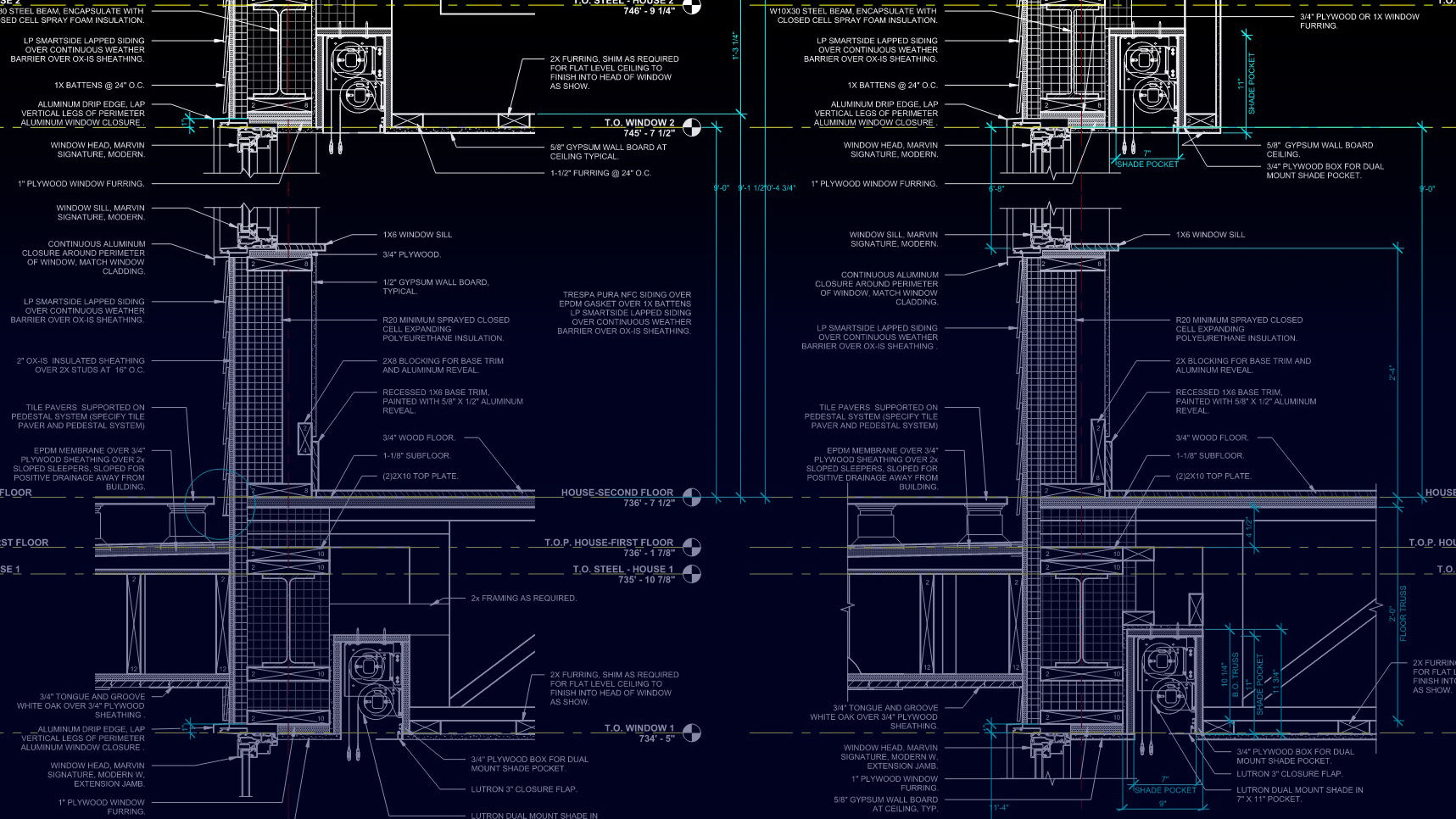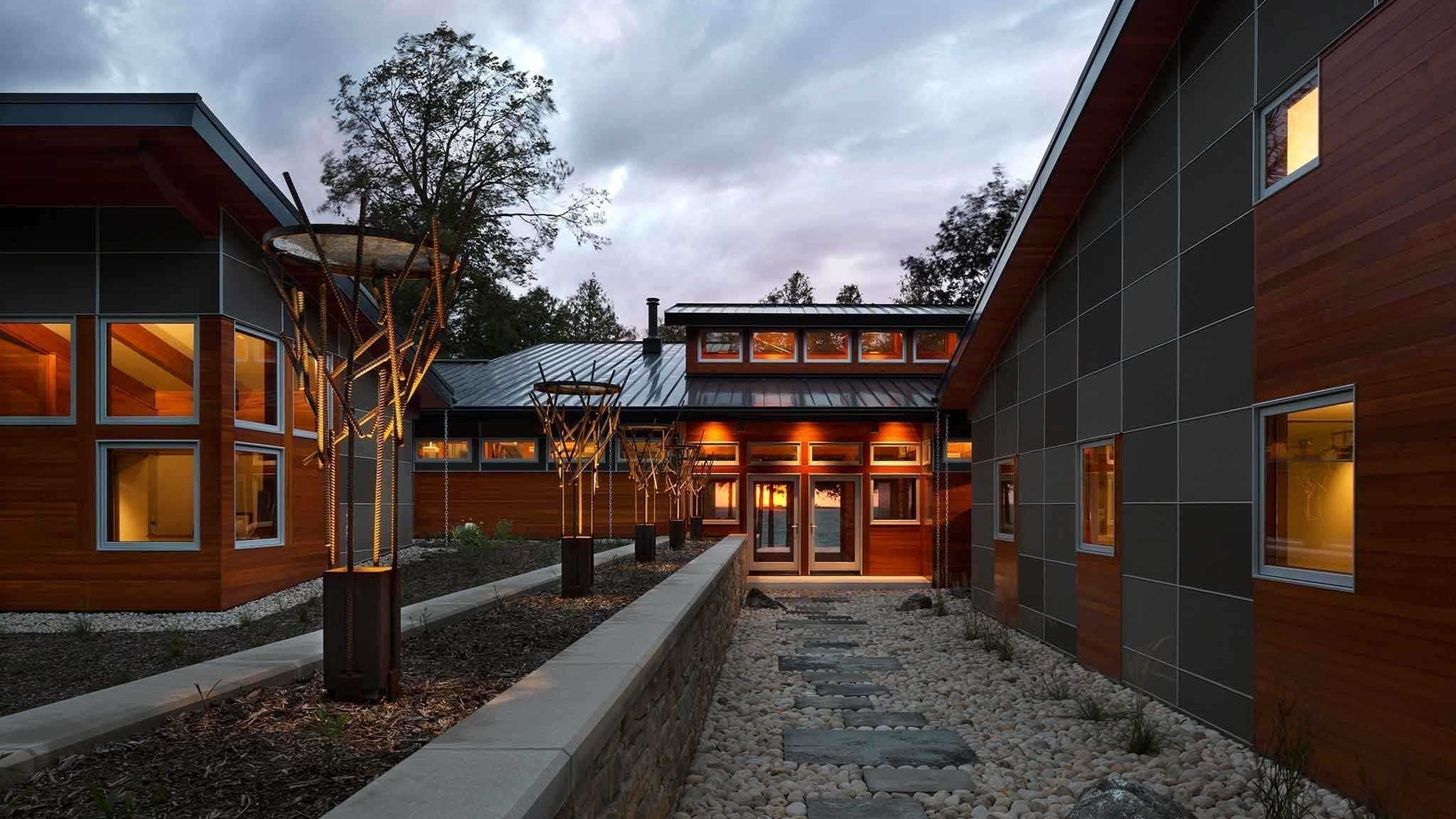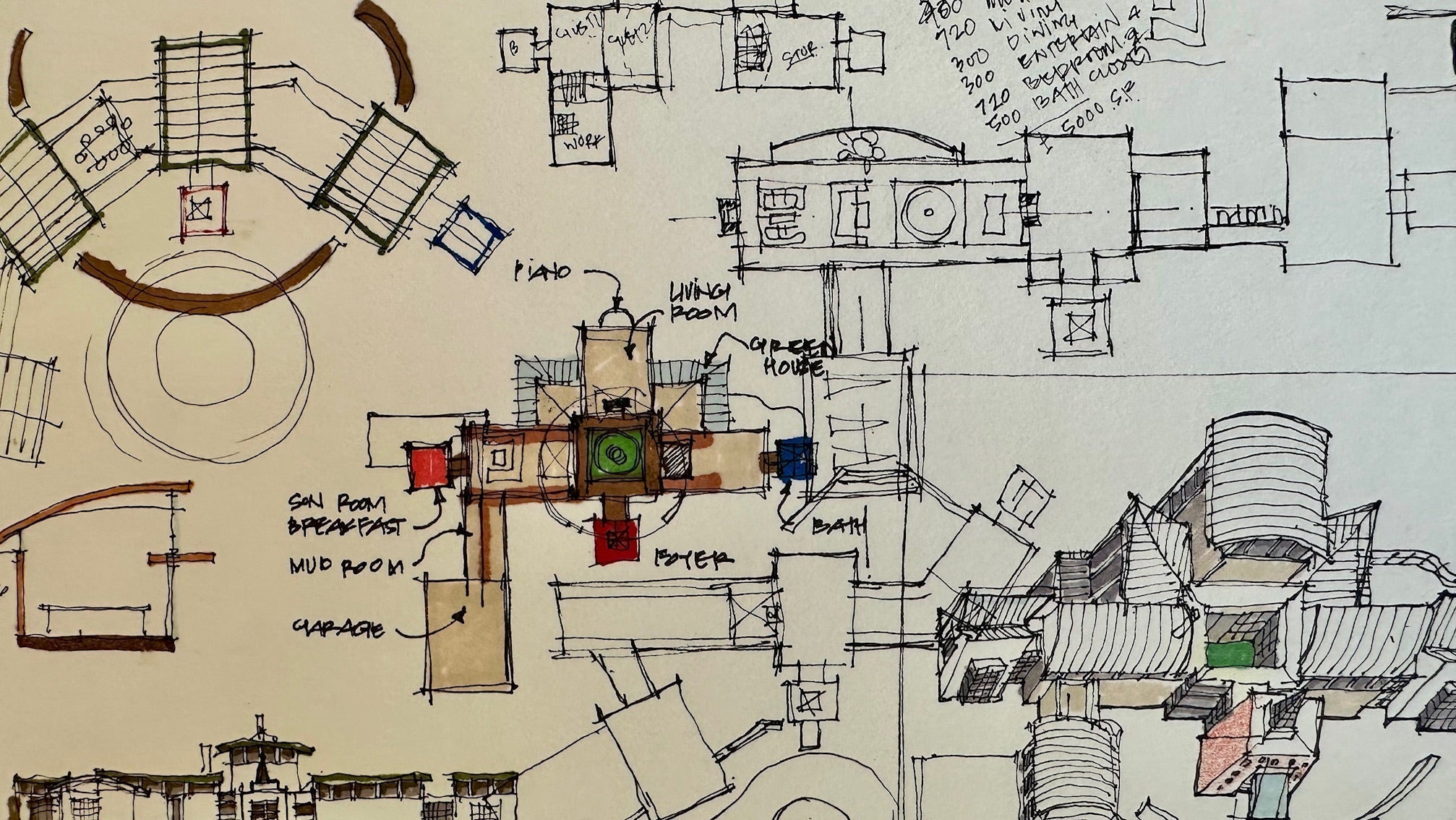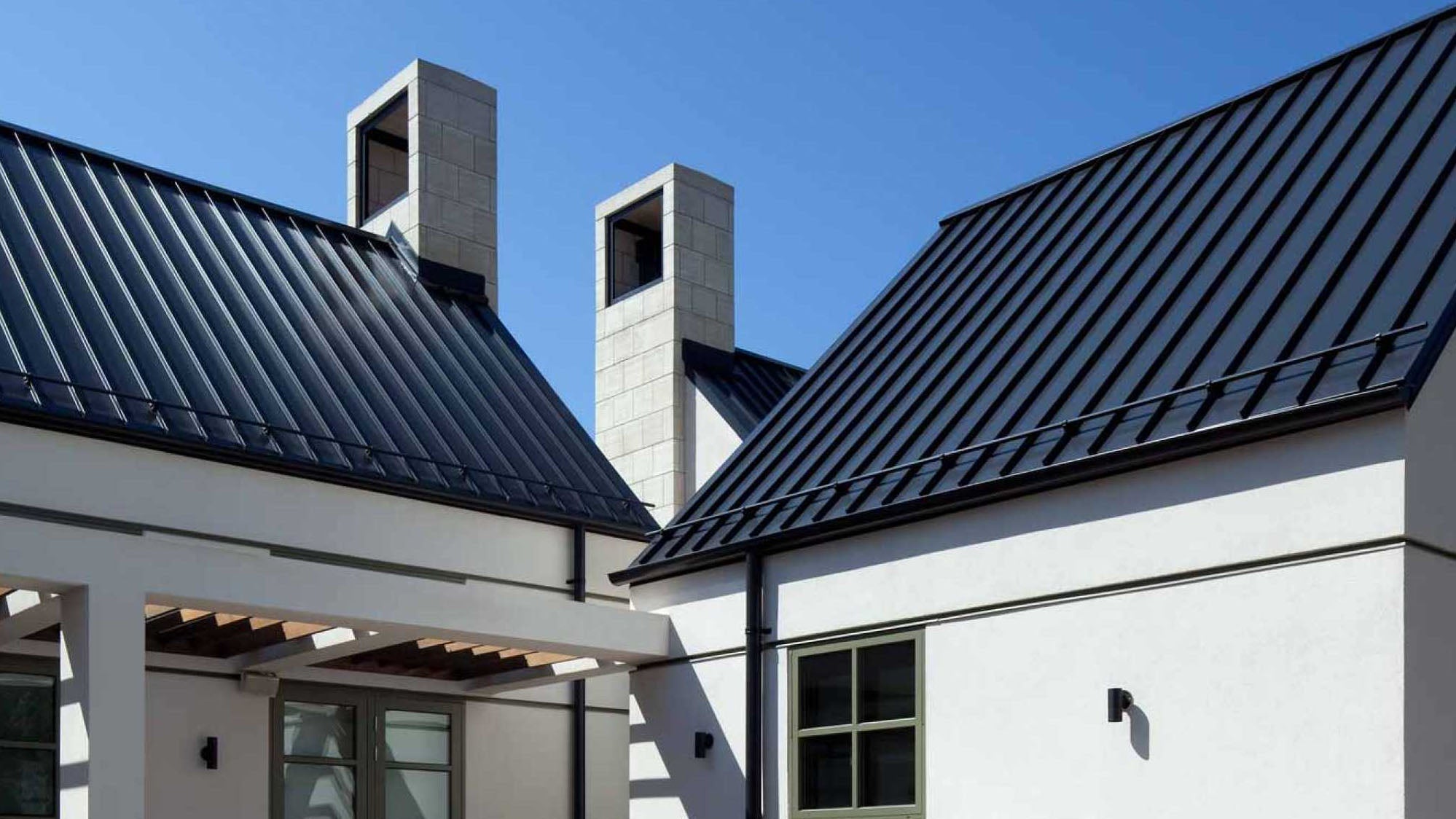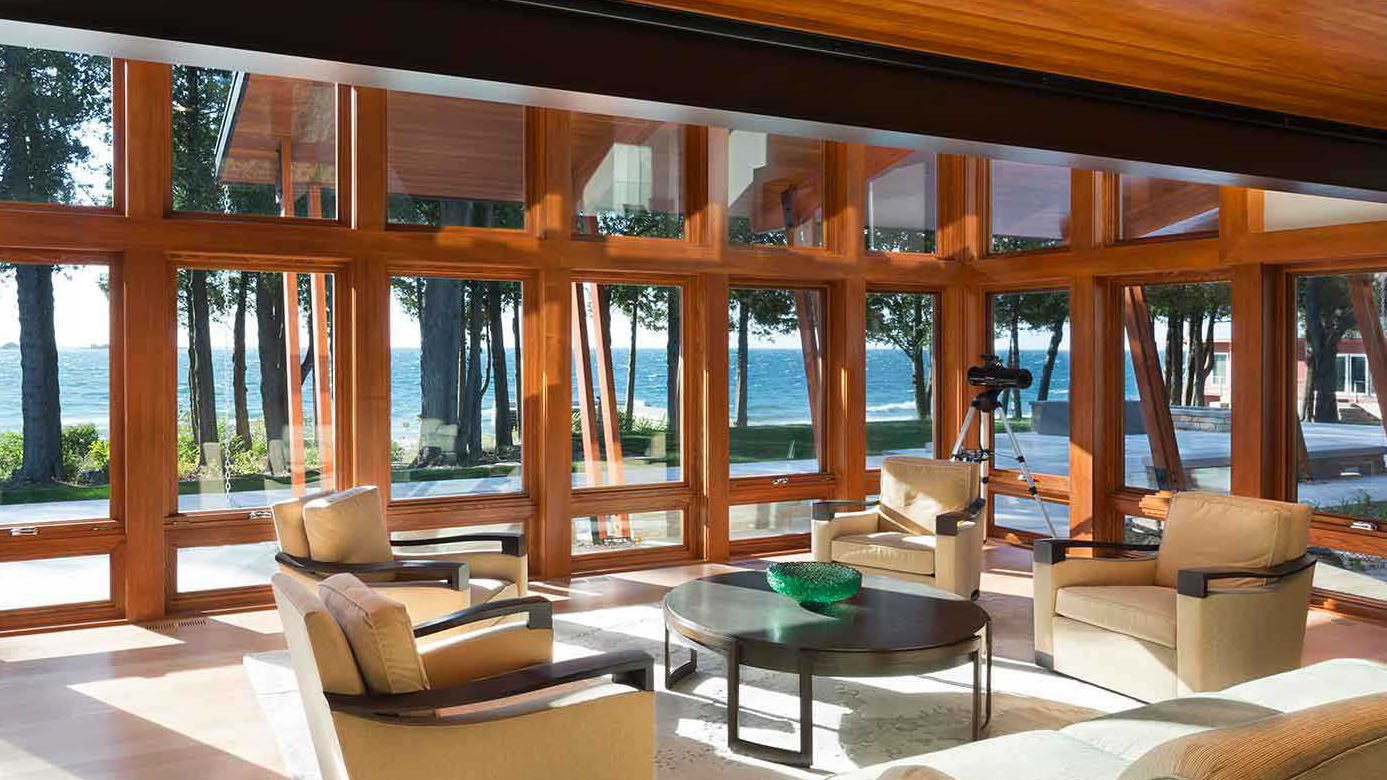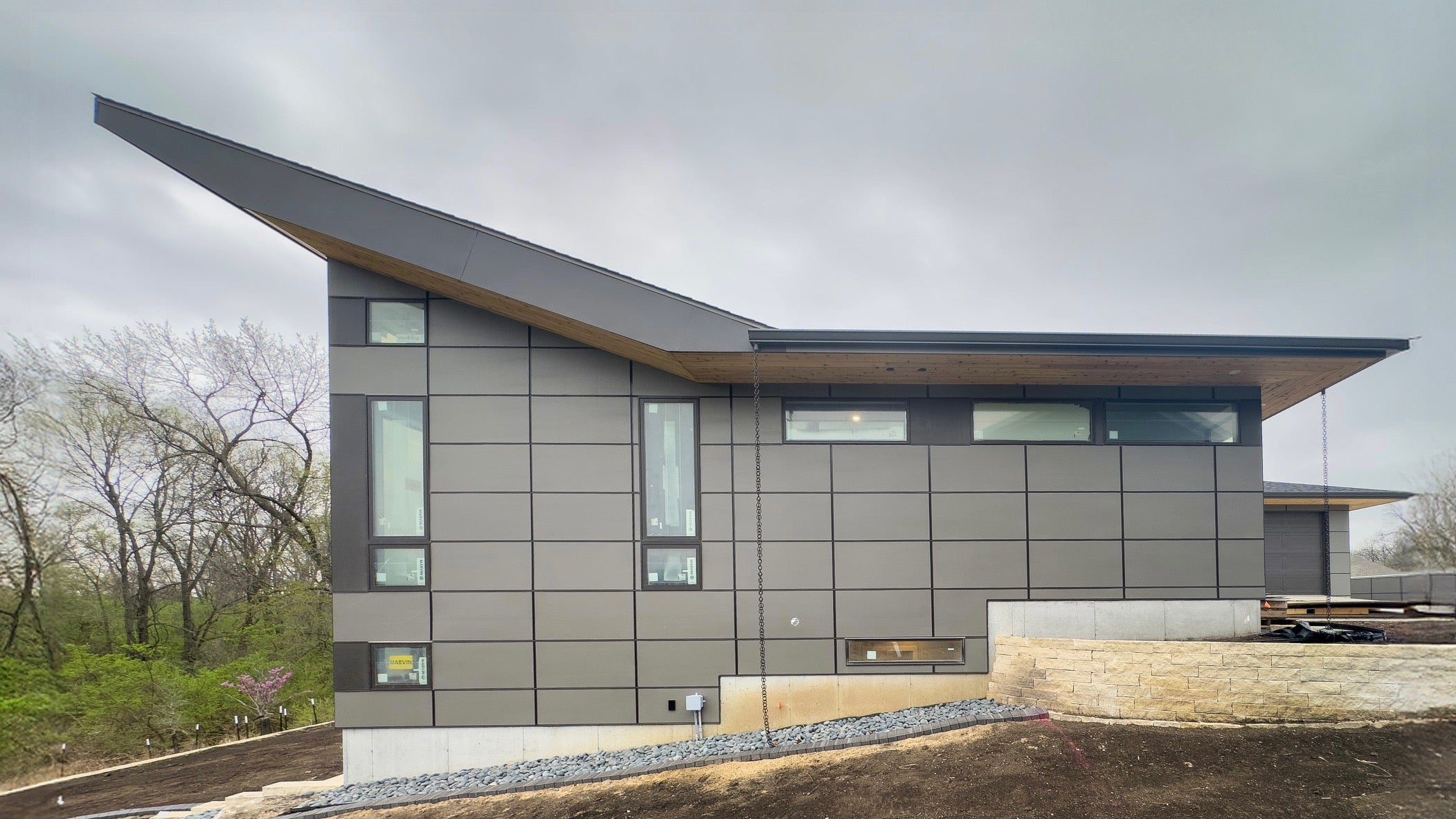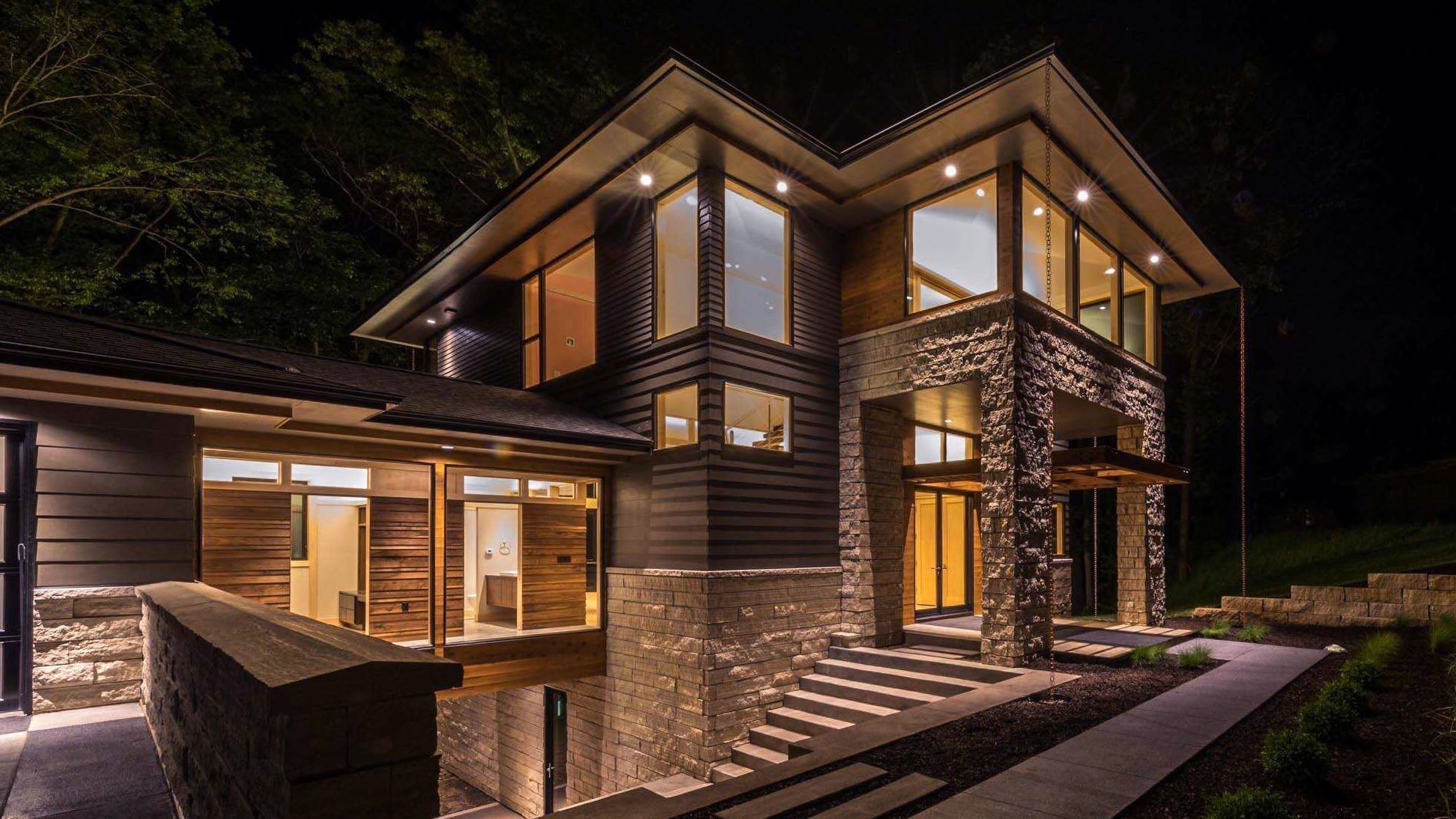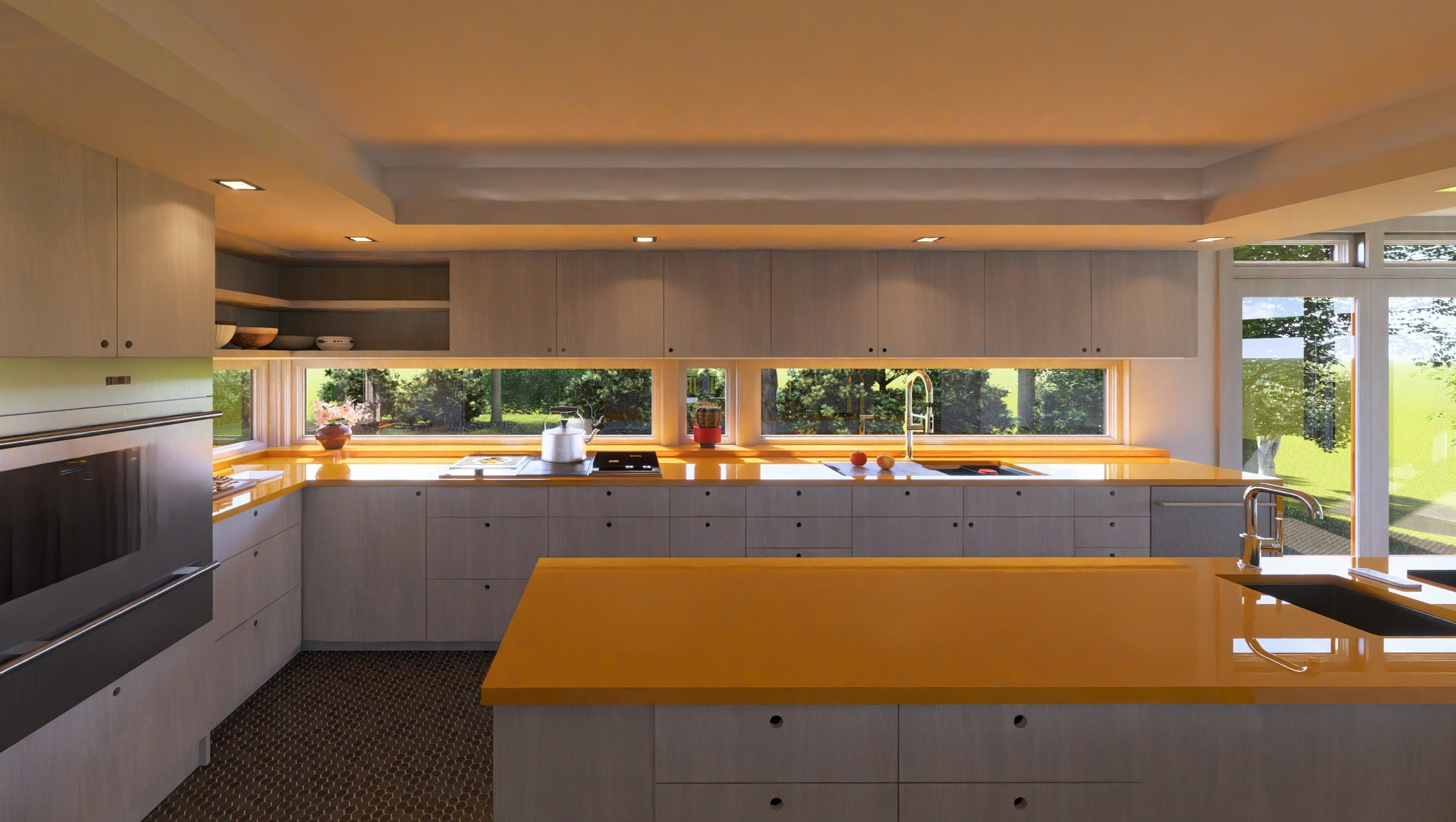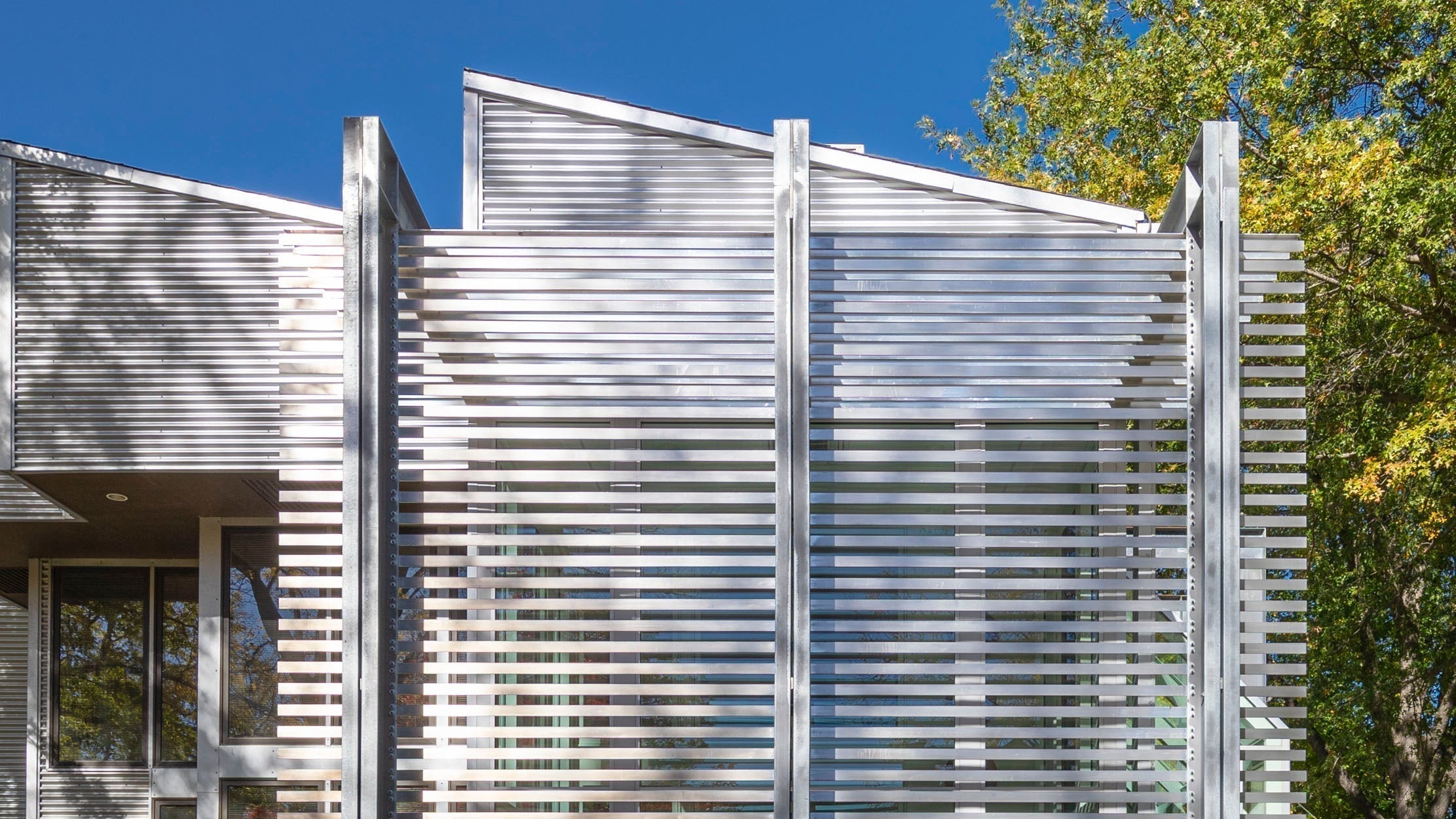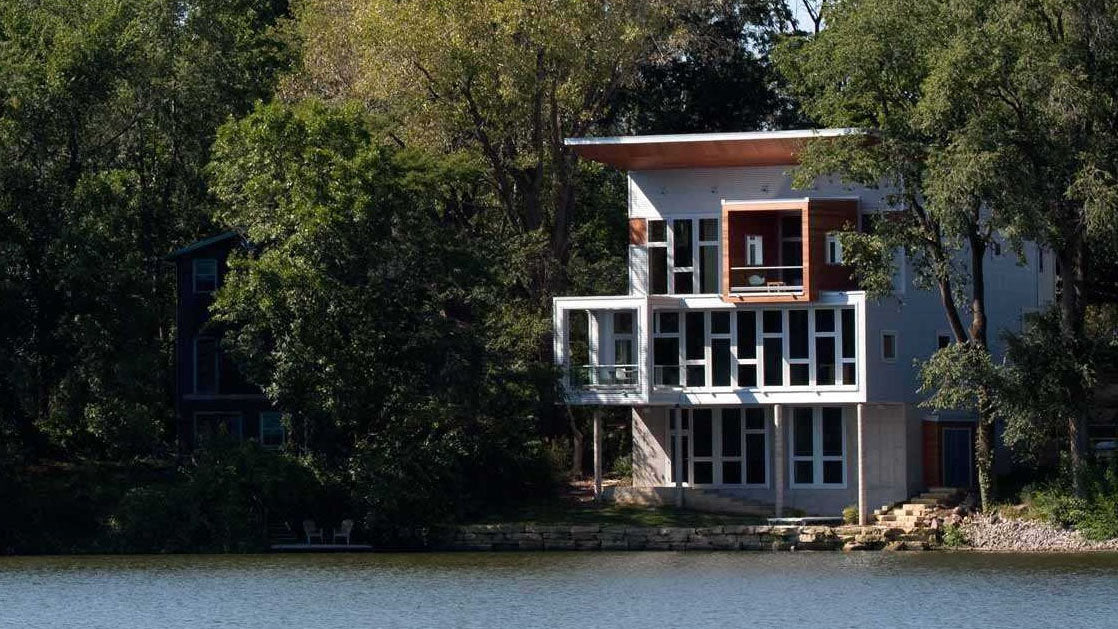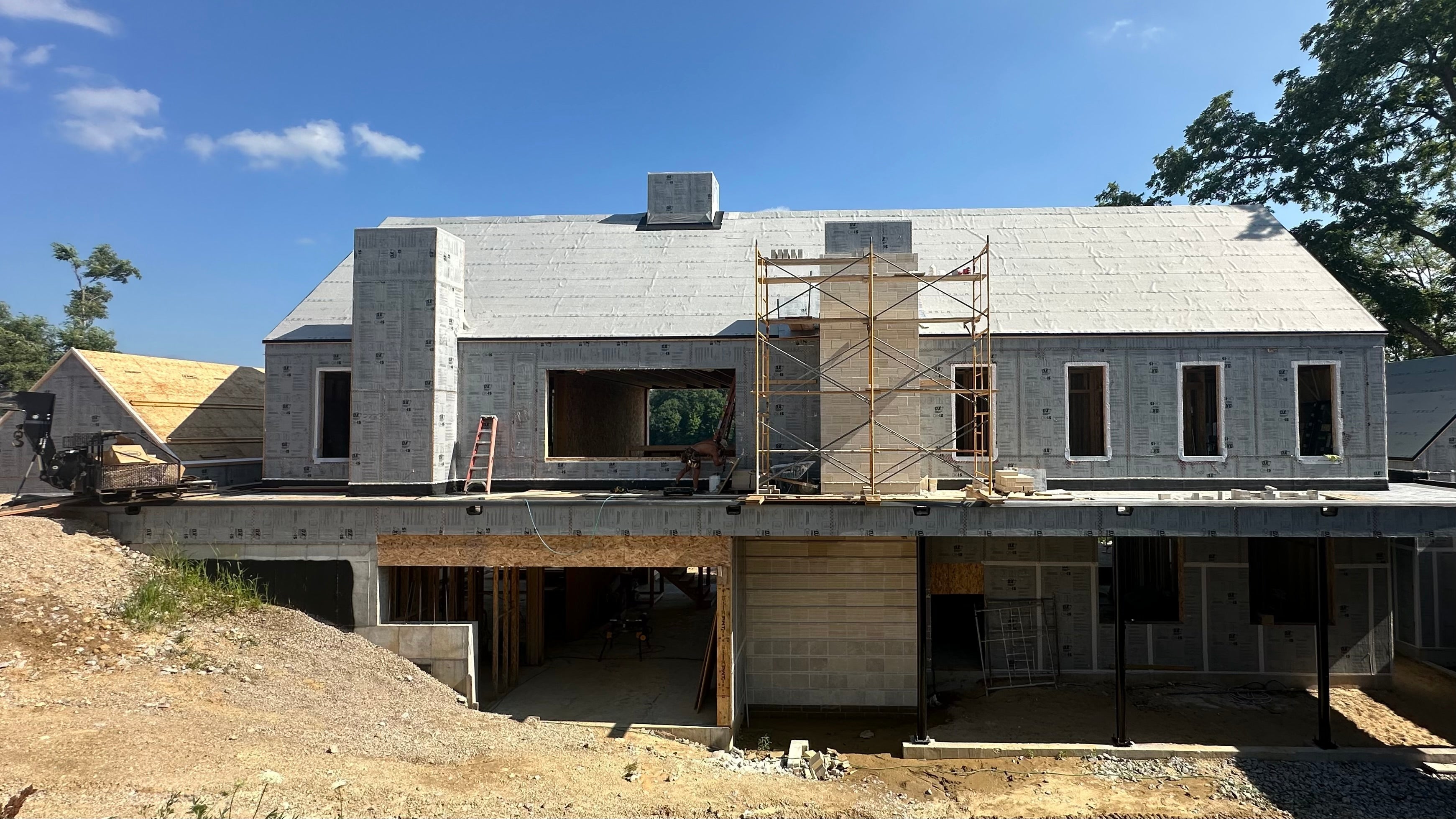Balancing beauty, performance, and practicality
Choosing windows for a custom home is about more than just letting in light. The right windows shape how your home looks from the street, how each room feels from the inside, and how comfortable and efficient your house will be for decades to come.
At Akar Architecture, we help our clients navigate countless window options—balancing architectural style, climate needs, budget, and long-term performance. Here are a few things to keep in mind as you choose windows for your new home.
1. Match your home’s architectural style
Your windows should feel like they belong—inside and out. Large, minimal frames often suit modern houses, while divided-light windows or classic double-hungs complement traditional homes.
From the street, windows help define curb appeal and proportions. Inside, they frame views, create natural focal points, and shape how daylight moves through your rooms.
2. Consider local climate and energy efficiency
Our region’s four seasons demand windows that can handle both cold winters and hot, humid summers. Look for high-performance glass (like low-E coatings) to reduce heat loss in winter and limit solar gain in summer. Pay attention to U-values (insulation performance) and Solar Heat Gain Coefficient (SHGC). Good windows lower energy bills and make your house more comfortable year-round.
3. Learn about different window types
 Different rooms—and different walls—often need different kinds of windows. Here’s a quick guide to the most common styles and where they work best:
Different rooms—and different walls—often need different kinds of windows. Here’s a quick guide to the most common styles and where they work best:
Fixed / Picture Windows
- Don’t open; ideal for framing views and bringing in maximum daylight.
- Often paired with operable windows nearby for ventilation.
Casement Windows
- Hinged on one side and open outward like a door.
- Great for catching breezes and sealing tightly when closed—good for energy efficiency.
Awning Windows
- Hinged at the top and open outward.
- Often used higher on walls or in combination with large fixed windows.
- Can stay open for ventilation even during light rain.
Sliding Windows
- One or more sashes slide horizontally.
- Simple to use and good where there’s limited space for a sash to swing out.
Double-Hung (or Single-Hung) Windows
- Classic look—both sashes (double-hung) or only one sash (single-hung) slide up and down.
- Easy to ventilate and clean; popular in traditional or historic homes.
Specialty Shapes & Corner Windows
- Modern homes often use large corner windows or custom shapes to blur inside and outside.
- Good for capturing views and unique architectural statements.
Each type has pros and cons for ventilation, cleaning, energy performance, and aesthetics. The best homes often mix window types to get the right function and feel in each room.
4. Size matters more than you think
At Akar Architecture, we’ve found that the way you size and group your windows can make a surprising difference in your budget. For example, depending on the window company, one large 8' x 8' window can sometimes cost less than four individual 4' x 4' windows. Similarly, grouping or mulling several windows together as one factory-built unit can be more cost-effective than ordering them separately.
However, bigger windows are heavier and can require special equipment or extra labor to install safely. What you save on the unit cost can sometimes add back up in installation expenses. Balancing window size, placement, and installation early in the design helps you get the look you want—without surprises later.
5. Choose the right materials for your lifestyle
Window frames come in many materials, each with its own look, feel, cost, and maintenance needs. Here’s a quick overview to help you compare:
Vinyl Windows
Pros:
- Cost-effective and widely available
- Good insulation value
- Low maintenance — no painting needed
Cons:
- Limited color options (typically white or tan)
- Can warp or discolor over time, especially in extreme heat
- Less durable than other options
Aluminum (Metal) Windows
Pros:
- Sleek, modern look with narrow sightlines
- Strong and durable
- Good for large expanses of glass
Cons:
- Poor insulator on its own (thermal breaks improve this)
- Can feel cold to the touch
- May condensate in cold climates without proper design
Fiberglass Windows
Pros:
- Strong, stable, and energy-efficient
- Resists warping, swelling, or shrinking
- Can be painted; modern lines suit contemporary homes (e.g., Marvin Modern)
Cons:
- Higher cost than vinyl or standard aluminum
- Fewer style options compared to wood
Wood Windows
Pros:
- Warm, timeless aesthetic
- Easy to customize shapes, sizes, and profiles
- Can be stained or painted any color
Cons:
- Requires regular maintenance (painting, sealing)
- Susceptible to moisture damage if not well cared for
- Typically more expensive
Wood-Clad Windows (Wood inside, durable exterior)
Pros:
- Best of both worlds: wood’s warmth inside, low-maintenance exterior
- Excellent performance in harsh climates
- Many premium options with traditional or modern profiles
Cons:
- Higher upfront cost
- Still need interior maintenance if you choose stained wood
6. Plan for function and comfort
Think through how your windows will open, how they’ll be cleaned, and how they’ll work with screens, awnings, or blinds. Some window types are easier to operate in tight spaces or above counters. Good design choices make living with your windows simple and enjoyable for years to come.
7. Budget for the long term
Windows are a significant investment — often 8–15% of your building budget. Durable, well-insulated windows can perform well for decades, saving on energy bills and maintenance. Sometimes spending more upfront saves money and stress down the road.
AKAR Opinion
There’s no single “best” window — only the ones that are right for your home, your climate, and how you want to live.
At AKAR Architecture, we love helping people navigate these choices — balancing beauty, comfort, durability, and performance. We’re always open to working with any window manufacturer that suits your project, but over the years we’ve often specified Marvin Ultimate and Marvin Modern. They’re usually a bit more expensive than some other options, but we appreciate their solid construction, clean lines, and balanced aesthetics — inside and out. They also offer thoughtful details in hardware, forms, and finishes that work well across a range of architectural styles. For many of our clients, they strike a good balance between upfront cost and long-term benefits.
If you’re planning a custom home, we’re always glad to share what we’ve learned and help you choose windows that feel just right for you.

